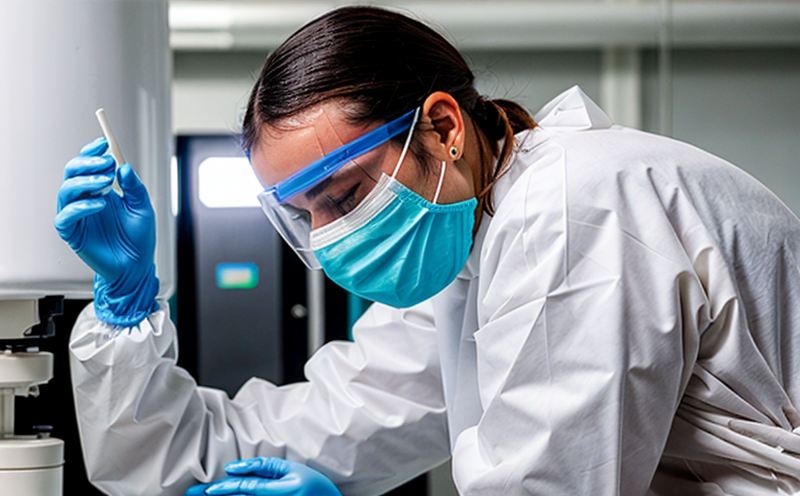CIE 63 Photobiological Testing of Daylight and Skylight Systems
The CIE 63 photobiological safety testing standard is an essential tool in ensuring that daylight and skylight systems are safe for human exposure. This service ensures compliance with this international standard, which evaluates the potential risk of photobiological hazards from visible light sources.
Our expertise lies in conducting comprehensive tests on a wide range of daylight and skylight systems to determine their compliance with CIE 63:1998. These systems encompass various types such as roof windows, clerestories, atriums, and other architectural elements that bring natural light into buildings.
The testing process is meticulous and involves several stages. First, the specimen must be prepared according to strict guidelines provided in CIE 63:1998. This includes ensuring that all parts of the system are intact, clean, and free from any foreign substances that could affect test results.
Once prepared, the specimen is subjected to a series of tests designed to simulate real-world conditions under which it will be used. These include exposure durations, viewing angles, and environmental factors like temperature fluctuations or humidity levels. The purpose behind these simulations is to assess how the system behaves in different scenarios and whether there are any risks associated with prolonged exposure.
One critical aspect of this testing method involves measuring the intensity and spectral distribution of visible light emitted by the daylighting systems being evaluated. By analyzing both parameters, we can determine if they fall within safe limits prescribed by CIE 63:1998. Any excessive levels may indicate potential health hazards such as eye strain or increased risk of skin cancer.
It’s important to note that while natural sunlight itself poses no significant photobiological risks when used appropriately, certain modifications made during design and installation can introduce these risks if not properly managed. For instance, reflective surfaces within buildings can concentrate light beams onto sensitive areas, leading to unintended consequences for occupants' well-being.
Our team uses advanced instrumentation calibrated according to international standards like ISO 17269-3 (2018), ensuring accurate measurements throughout the testing process. Additionally, we employ state-of-the-art software tools that help us analyze data collected during experiments and generate detailed reports summarizing findings. These documents serve as valuable resources for clients seeking assurance about their products' safety performance.
By adhering strictly to CIE 63 procedures, our laboratory provides reliable evidence supporting claims made regarding photobiological safety of daylight systems. Such information is crucial not only from a regulatory perspective but also in fostering trust among stakeholders including architects, builders, and end-users who rely on these innovations for creating healthier indoor environments.
Understanding the importance of this testing process allows us to offer clients tailored solutions addressing specific needs related to photobiological safety evaluation. Our goal is always to deliver accurate results quickly so that our customers can proceed confidently with their projects knowing that every precaution has been taken.
Industry Applications
| Application Area | Description |
|---|---|
| Ambient Lighting Designers | Evaluating the impact of daylight on interior spaces to enhance visual comfort and reduce energy consumption. |
| Sustainability Consultants | Determining the environmental benefits derived from incorporating more natural light into buildings, thereby reducing reliance on artificial lighting sources. |
| Architects & Engineers | Evaluating proposed designs for compliance with relevant health and safety regulations before final approval. |
| Manufacturers of Daylighting Products | Ensuring product quality meets international standards ensuring consumer safety. |
| Healthcare Facility Managers | Monitoring the impact of natural light on patient recovery rates and staff productivity. |
| School Administrators & Educators | Evaluating classroom layouts for optimal learning conditions, considering both academic performance and long-term health impacts. |
The application areas listed above highlight just a few ways that photobiological safety testing plays an integral role across multiple sectors. By providing robust evidence supporting claims about the safety of daylighting systems, we contribute significantly to maintaining high standards within these industries.
Quality and Reliability Assurance
- Consistent Compliance: Ensuring consistent adherence to CIE 63:1998 throughout the testing process.
- Advanced Instrumentation: Utilizing cutting-edge equipment calibrated per ISO standards for precise measurement.
- Data Analysis: Employing sophisticated software tools to analyze collected data accurately and comprehensively.
- Detailed Reporting: Providing comprehensive reports summarizing findings, which serve as valuable resources for clients.
These elements form the foundation of our quality assurance framework, ensuring that all tests conducted meet rigorous standards. We continuously monitor and improve these processes to maintain top-tier performance in delivering reliable results every time.
Environmental and Sustainability Contributions
The implementation of photobiological safety testing through CIE 63:1998 contributes positively to both environmental sustainability and overall well-being. By reducing unnecessary artificial lighting, daylighting systems help lower energy consumption, which in turn decreases greenhouse gas emissions associated with electricity production.
Moreover, proper evaluation ensures that the integration of natural light into buildings enhances occupant health by promoting better circadian rhythms, improving mood, and increasing productivity levels. This aligns perfectly with broader sustainability goals aimed at creating healthier living environments while minimizing ecological footprints.
In summary, photobiological safety testing not only promotes compliance with international standards but also supports sustainable practices that benefit society as a whole. Through this service, we contribute to fostering greener buildings and promoting healthy lifestyles for all those who inhabit them.





